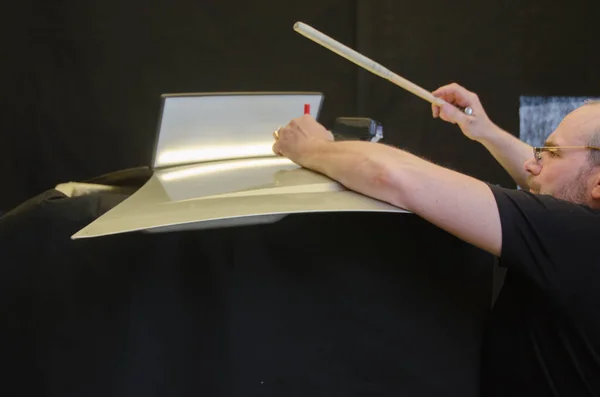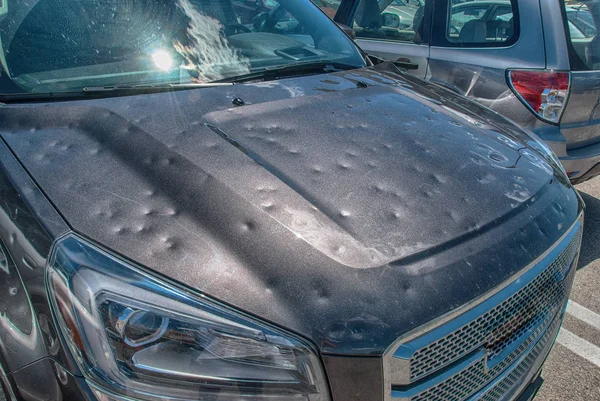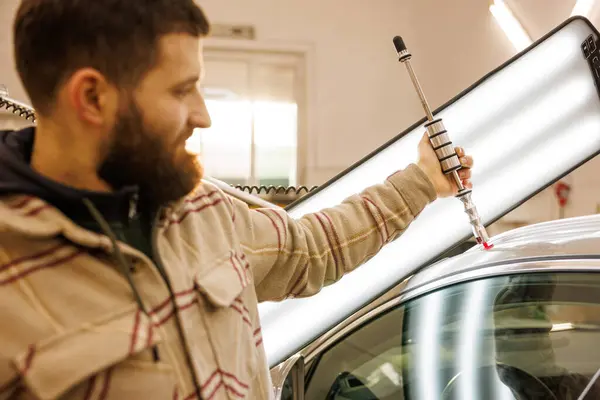Get Your Car Back In Shape: Essential Hail Dent Repair Tips
Severe hail can inflict considerable harm on cars, resulting in unattractive dents and marks. Luckily, with the appropriate knowledge and methods, repairing hail damage is achievable. This guide will delve into the best strategies and advice for rejuvenating your vehicle's look, preserving its worth, and selecting suitable repair solutions. Whether you’re thinking about tackling the repairs yourself or seeking expert assistance, this article will provide all the information you need.
Understanding Hail Damage
How Hail Damages Your Car
Hail can come in different sizes and strengths, and even a short hailstorm can cause significant dents on your car. When hail hits, it can damage multiple areas of the vehicle, including the roof, hood, trunk, and side panels. This type of damage not only alters the look of your car but can also decrease its resale value.
Why You Should Address Hail Damage
Neglecting hail damage can result in additional complications, particularly if the dents impact the vehicle's paintwork. If left unaddressed, these dents allow moisture to seep into the car's body, which may result in rust formation. Rust compromises the integrity of the vehicle and can proliferate if not dealt with promptly, leading to even pricier repairs in the future.
Hail Dent Repair Options
Paintless Dent Repair (PDR)
A widely favored method for fixing hail dents is Paintless Dent Repair (PDR). This approach efficiently restores the look of your vehicle without requiring significant painting or bodywork. By utilizing specialized tools, PDR gently reshapes the dented metal to its original form, ensuring that your car's factory paint and finish remain intact.
Advantages of PDR:
- More affordable and faster than conventional techniques.
- Maintains your car's original paint, helping to uphold its worth.
- Ideal for addressing most hail damage, particularly small to medium dents.
When to Opt for PDR: PDR is best suited for situations where the paint remains intact and the dent is not too deep. It’s an excellent option for those seeking a quick, effective, and budget-friendly repair solution.

Traditional Dent Repair
In cases of significant hail damage that results in chipped or cracked paint, conventional dent repair techniques might be required. This process involves sanding down the affected area, applying filler, and repainting to bring back the original finish. While these traditional methods often demand more labor and time, they are crucial for addressing larger and more intricate dents.
Advantages of Traditional Dent Repair:
- Capable of addressing large and profound dents that paintless dent repair (PDR) cannot resolve.
- Ideal for situations where the vehicle's finish has been damaged.
Essential Hail Dent Repair Tips
Hail dent repair is a specialized process to remove dents caused by hailstones, restoring the
vehicle's original surface without the need for repainting.
Assess the Damage Before Starting Repairs
Prior to starting any repairs, it is crucial to evaluate the level and seriousness of the hail damage. Look for indications of paint peeling or fissures near the dents, as this information will guide your choice between paintless dent repair (PDR) and conventional dent repair methods.
Helpful Hint: Keep a record of all the dented sections to ensure that every area is addressed during the repair.
Try the DIY Approach for Small Dents
If your vehicle has only slight hail damage and the paint remains undamaged, you might want to try fixing it yourself. Below are two commonly used DIY techniques:
- Using a Hair Dryer and Compressed Air: By warming the dented section with a hair dryer followed by a blast of compressed air, you may be able to restore the metal's shape.
- Hot Water Technique: Another approach is to pour hot water onto the dent and, if possible, push from behind to help the metal revert to its former configuration.
Although these techniques may be useful for small dents, they may prove ineffective for larger or more intricate hail damage.

Consult a Professional for Extensive Damage
If your vehicle has significant dents or damage in various spots, it's usually advisable to consult a professional repair technician. These experts possess the necessary tools and expertise to repair your car efficiently. Many auto body shops provide complimentary estimates, so it might be worthwhile to check out a few for comparison purposes.
File an Insurance Claim
If you possess full auto insurance, your policy might include coverage for hail damage. Submitting a claim can assist in reducing repair expenses, particularly if the damage is significant. It's advisable to examine the details of your policy beforehand to grasp your coverage and deductible amounts.
Advice: Capture images and take notes of the damage before making any repairs. These may be required by your insurance provider to handle your claim.
Protect Your Car from Future Hail Damage
Once your car has been fixed, think about taking steps to safeguard it against future hailstorms. Hail protection covers, or hail blankets, can be draped over your vehicle when a storm is on the horizon, helping to reduce possible damage. For those residing in regions susceptible to hail, this minor investment could save you significant time and expenses down the line.
Choosing the Right Repair Shop
What to Look for in a Hail Repair Shop
Selecting a repair shop requires careful consideration, especially when it comes to hail damage repairs, particularly Paintless Dent Repair (PDR). Seek out establishments that have positive customer feedback and inquire about their warranty options. A solid warranty indicates that the shop is confident in the quality of its services.
Questions to Ask:
- Are you an expert in repairing hail damage?
- How much time will the repairs require?
- Is Paintless Dent Repair available for my vehicle?
- What type of warranty do you provide?
Avoiding Common Scams
Regrettably, hailstorms can occasionally lead to repair scams. Exercise caution when encountering repair shops that present deals that seem too good to be true, and make sure to request a written estimate. Avoid mobile repair services that lack a local address or a fixed business location.
110 E 43rd St, Suite 120
Garden City, Idaho 83714, USA
Phone: (208)-251-5338

